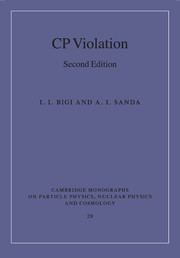22 - Summary and perspectives
Published online by Cambridge University Press: 10 March 2010
Summary
The discovery that the weak forces break previously unquestioned discrete symmetries – first parity P and charge conjugation C, then CP and T – had a revolutionizing impact on our perception of nature and how we analyse the elements of its grand design. We realized that symmetries should not be taken for granted; some even began questioning that sacrosanct fruit of quantum field theory, CPT invariance. We learnt from the violation of CP symmetry – not from that of P and C separately – that left and right or positive and negative charge are dynamically distinct rather than being mere labels based on a convention; furthermore that nature distinguishes between past and future even on the microscopic level. From 1964 to 2001 CP violation had been observed only in a single system – the decays of KL mesons – as a seemingly unobtrusive phenomenon. Yet even so we had come to understand that it represents not only a profound intellectual insight, but has also many and far-reaching concrete consequences.
The huge predominance of matter over antimatter apparently observed in our universe requires CP violation if it is to be understood as dynamically generated rather than merely reflecting the initial conditions.
Once the dynamics are sufficiently complex to support CP violation, the latter can manifest itself in numerous different ways; we can even say the floodgates open.
The three-family SM can implement CP violation through the KM mechanism without requiring so-far unobserved degrees of freedom. It is already highly non-trivial that it can accommodate the data on ∈K and ∈k and ∈′ within the uncertainties.
[…]
- Type
- Chapter
- Information
- CP Violation , pp. 457 - 464Publisher: Cambridge University PressPrint publication year: 2009



